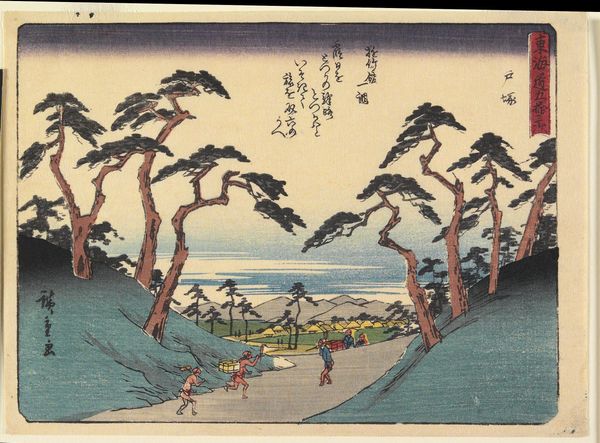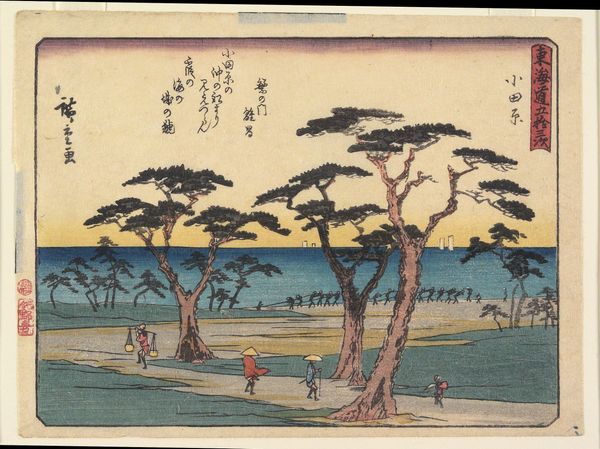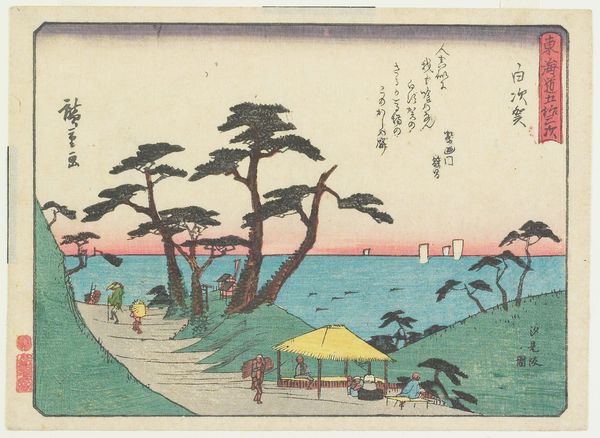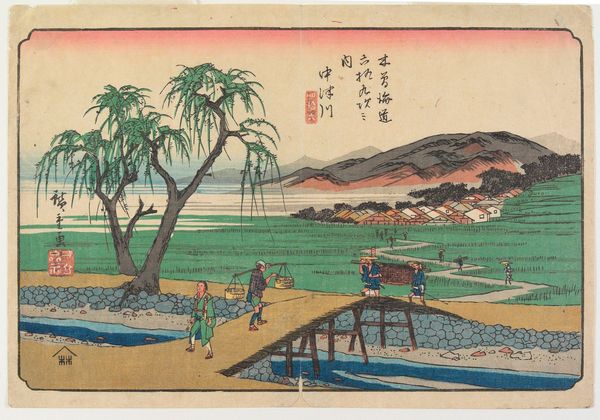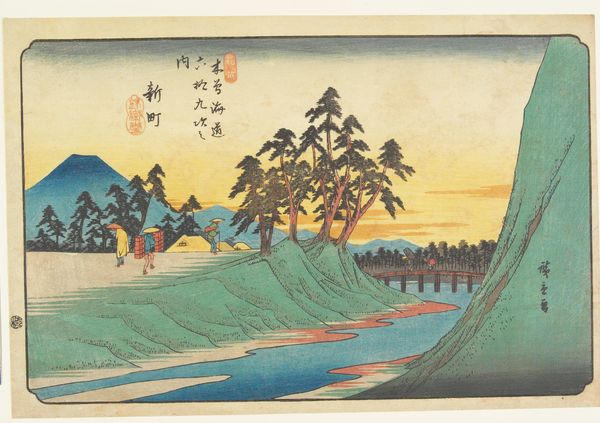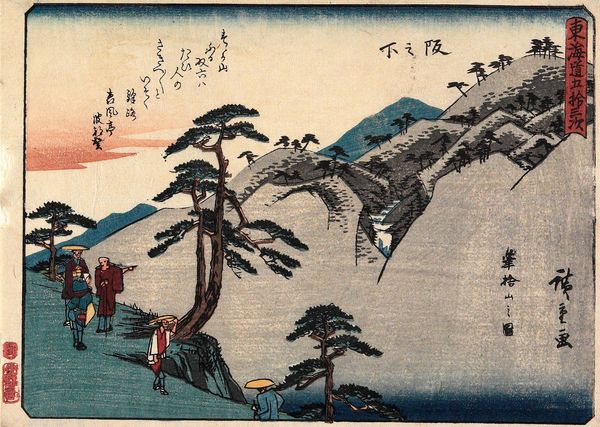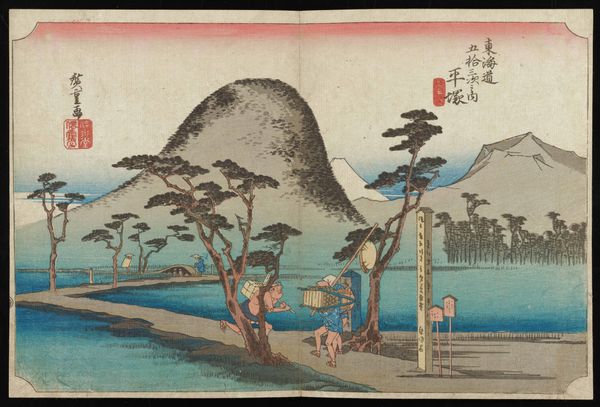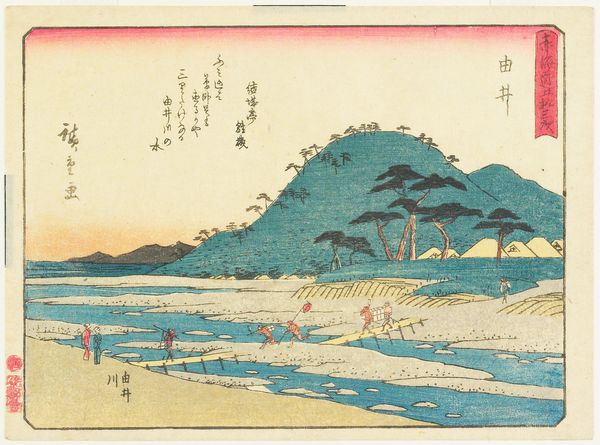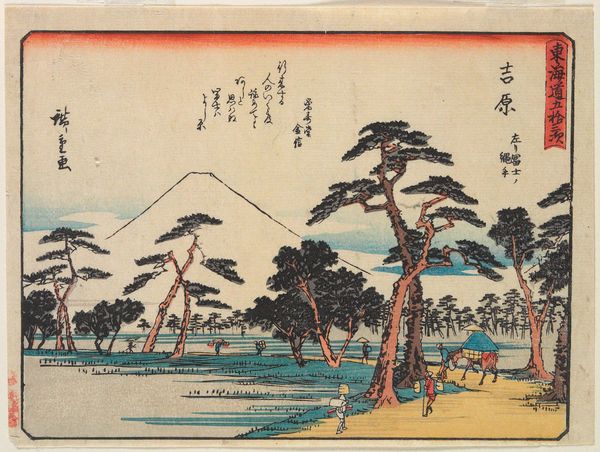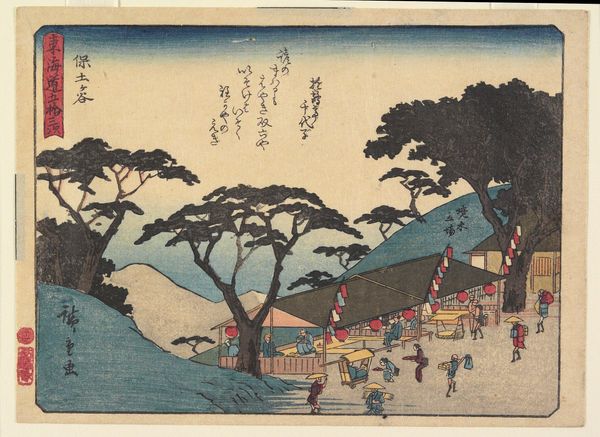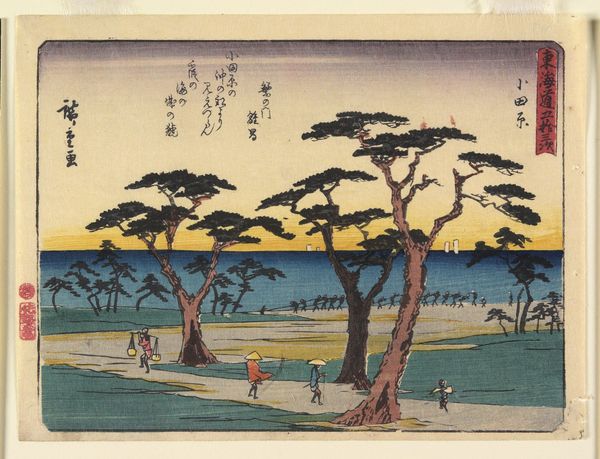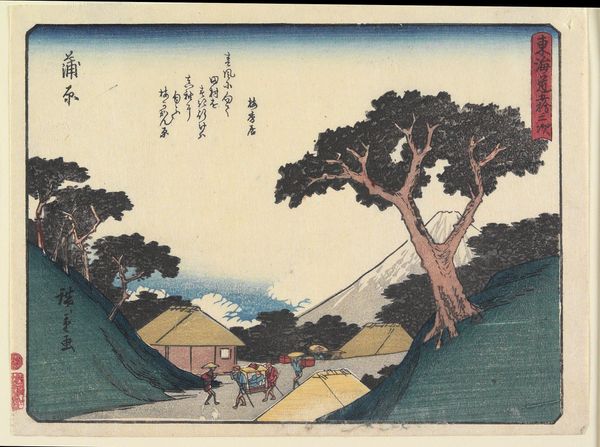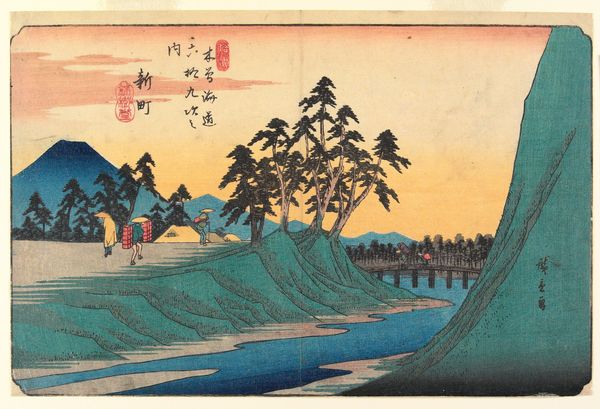
print, ink, woodcut
# print
#
asian-art
#
landscape
#
ukiyo-e
#
ink
#
woodcut
Dimensions: 6 1/4 x 8 3/8 in. (15.8 x 21.2 cm) (image)6 9/16 x 9 in. (16.7 x 22.8 cm) (sheet)14 x 17 15/16 in. (35.5 x 45.5 cm) (mat)
Copyright: Public Domain
Curator: Before us hangs Utagawa Hiroshige’s woodblock print, "Totsuka," created around 1840-1842, from his series "Fifty-three Stations of the Tōkaidō." Editor: It strikes me immediately as a snapshot of daily life infused with subtle anxieties, almost dreamlike in its composition. Curator: That dreamlike quality might stem from ukiyo-e traditions and the inherent class dynamics embedded within the imagery. We observe figures carrying heavy loads, juxtaposed against a seemingly idyllic landscape. Consider the social and political weight of labour at this moment. Editor: Precisely! And visually, these bent and burdened figures almost mirror the shapes of the windblown pine trees clinging to the hillside. There’s a parallelism; these hardy trees, emblems of strength and longevity in Japanese art, are perhaps symbolic of the resilience required of the common people. Curator: Fascinating. We see these trees repeated through other works too. Notice how Hiroshige positions the figures heading toward a distant, luminous coastline—likely evoking the promise of commerce, travel and opportunity that the Tōkaidō Road embodied. But these "opportunities" existed through exploitation, a racialized structure embedded within a nation expanding, not without consequence. Editor: Indeed. The path winds its way from near to far, mirroring our own passage of time. Note how he uses a limited colour palette to create depth—that lovely gradation of blues in the sky and the carefully placed touches of red on the burdened carriers in the middle ground. Colour holds great significance in visual storytelling. Curator: Which prompts consideration of cultural narratives and intersectionality. This wasn’t only a picture of laborers but spoke to Edo-period policies. Travel was restricted with documentation. Certain goods taxed at will. To read into such artwork involves acknowledging not only its face value, but systemic constraints within Japanese society. Editor: The artwork functions almost like a visual document that tells a historical tale while using symbols of endurance, a fascinating dance between social document and cultural symbolism. Curator: And perhaps a reminder of the continuities—and disruptions—in visual representation, socioeconomic disparities, and power structures that still resonate today. Editor: Exactly, looking at Totsuka has allowed us a glance back, a moment to understand historical symbolism of culture and work that also reflects in our future.
Comments
No comments
Be the first to comment and join the conversation on the ultimate creative platform.
